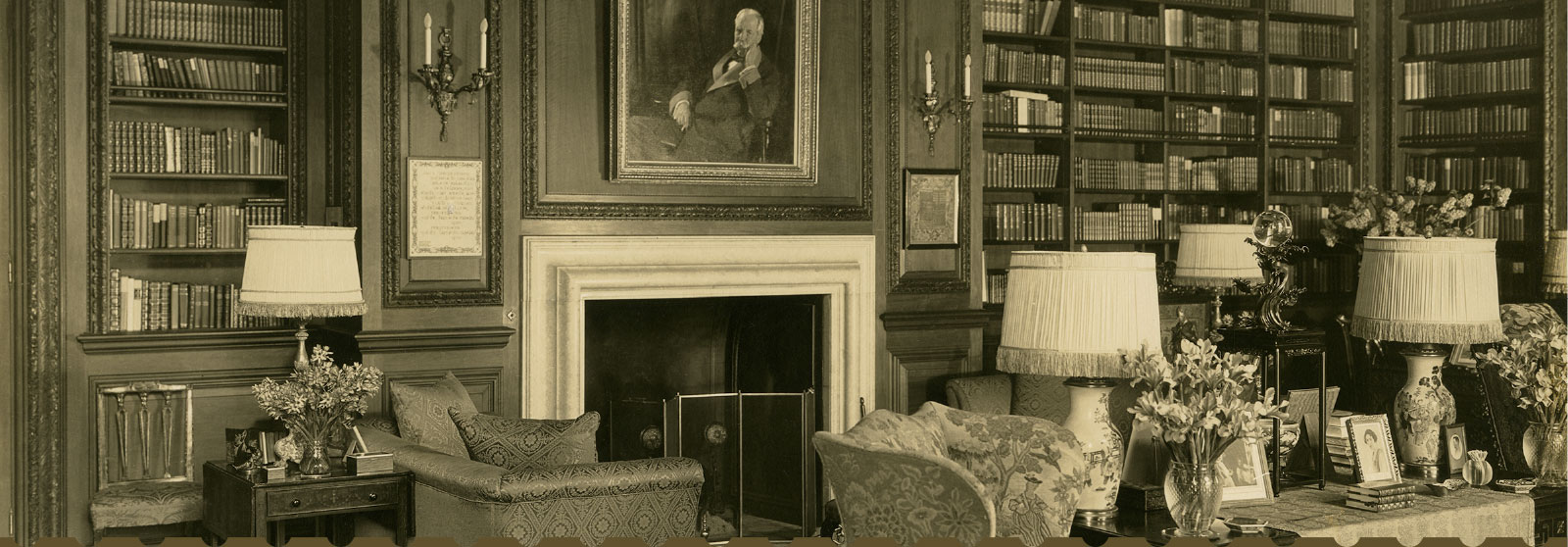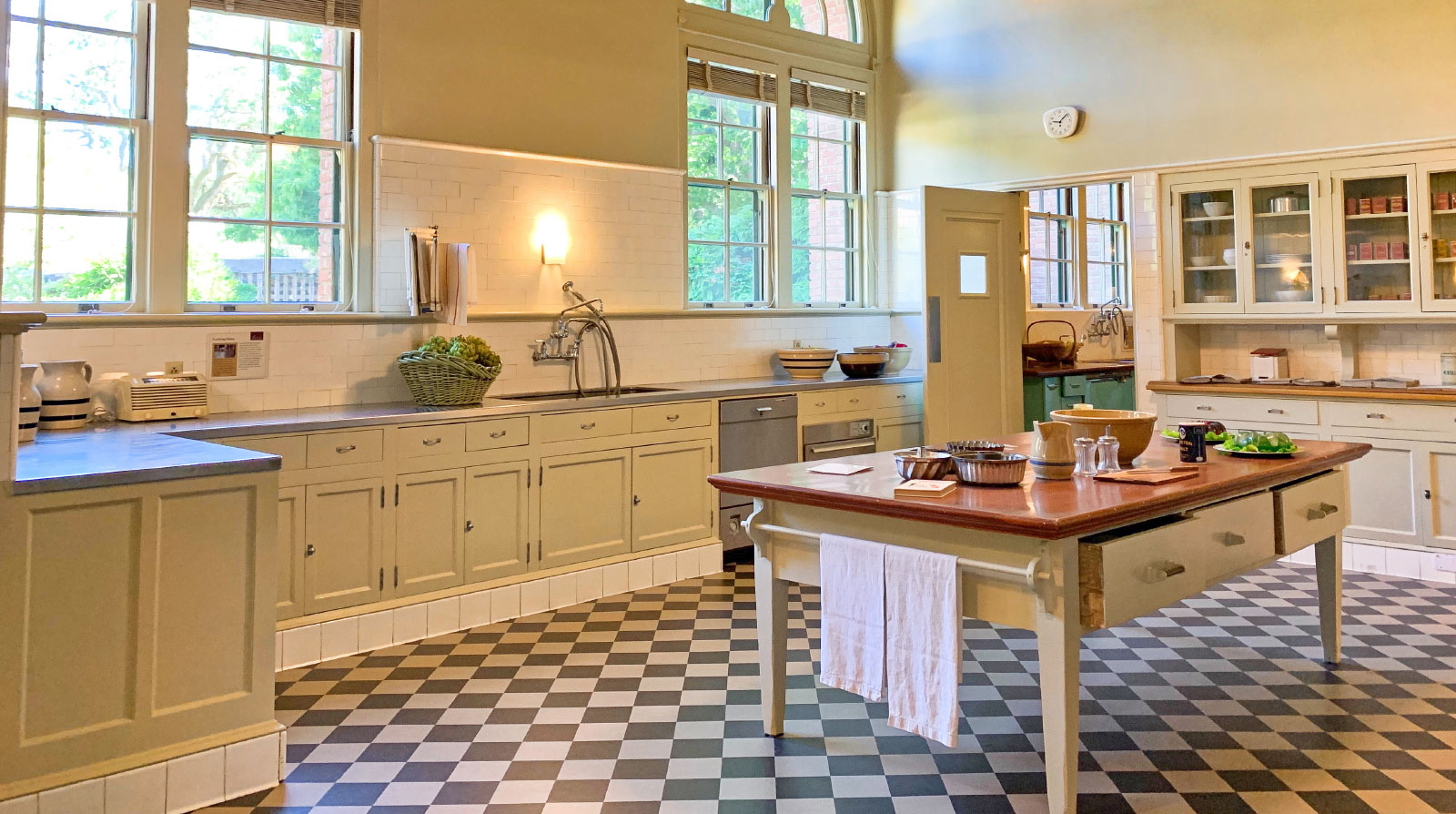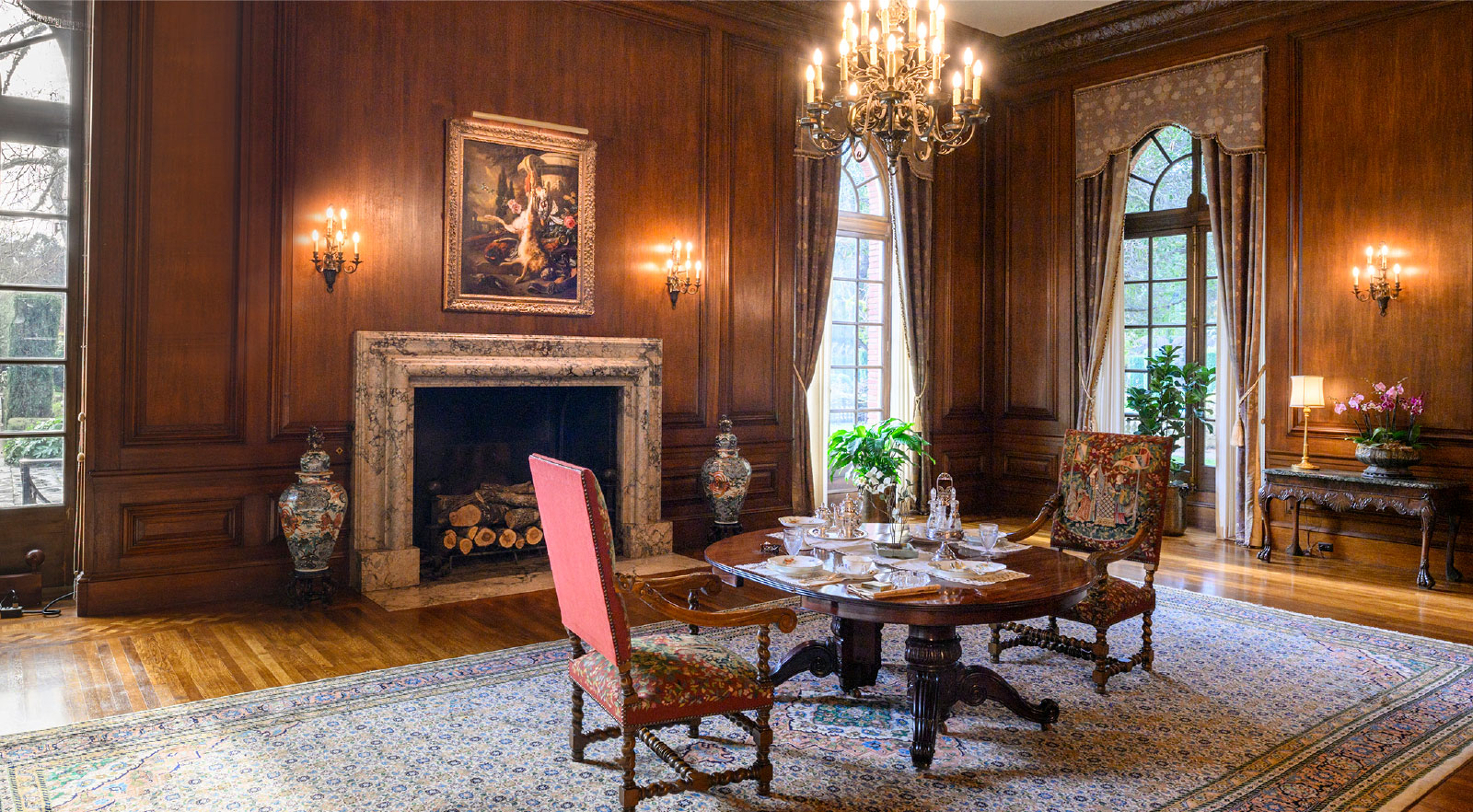
Restoring the Bourns’
Vision of the House
On the first architectural plans for Filoli, the project is titled “A Residence for Mrs. Bourn.” Agnes Bourn pored over the drawings, supervising every small detail of the new home she and her husband William envisioned as “a place to grow young” in their twilight years.
One of few women in her time to have her own passport and a Rolls Royce registered under her name, Agnes was equally bold in her design eye. She knew what she liked and shaped Filoli to reflect how she wanted to live.
When the House was finished, she set about furnishing the interior in an eclectic fashion and with comfort in mind. Posh antique cabinets and Tiffany mantel clocks were displayed next to inexpensive prints and souvenir knick-knacks from her travels, in an early version of what we might today call “high-low” style. Together with William, she chose paintings and sculptures from West Coast artists, often opting for pieces featuring gardens, women, and California landscapes.
It wasn’t an instant process but rather a long-term project for Agnes. In 1924, she wrote, “For Will and me, Filoli is quite perfect. It progresses little by little, but it takes time to develop a place if it is to have charm and individuality.”
After the Bourns passed away in 1936, the Roth family purchased the House fully furnished and kept its design mostly the same while adding their own personal touches. But when Lurline Roth donated Filoli to the National Trust for Historic Preservation in 1975, many traces of Agnes’ interior decoration were gone. The House was empty, with most of the furniture and objects sold at auction or taken with Lurline when she moved out. Since then, as Filoli opened to the public as a museum, the inside has been dressed differently over the years.

Our quest today is to restore the House to reflect Agnes’ original vision. Our Curatorial team is actively re-collecting original objects and redecorating the rooms in the Bourns’ aesthetic. But it goes beyond the objects themselves. We also hope to restore the sense of Filoli as a family home, full of the small details and ephemera of life, the green of house plants, and the stylish and quirky accents that Agnes originally chose. This project starts under your very feet.
Over the past few years, we have been restoring the oak wood floors of Filoli to their original dark stain. Even if you aren’t a floor connoisseur, you’ll notice that it makes a big difference and completely changes the feel of a room. In 2023, we refinished the flooring of both the Ballroom and Dining Room – two of the most impressive rooms in the House. A big decision in the Ballroom was whether to keep the stage, which was not an original part of the historic space. Our eventual compromise was to lower and shrink the stage, so it doesn’t have as large an impact on the overall feel of the room.
The walls of each room also tell their own story. While repainting the Cloakrooms, Kevin Wisney, Filoli’s Curator & Director of Collections, discovered that the walls were originally painted the same color as the other historic staff spaces. Years of use as the ticket office meant this evidence was covered up by modern paint. It may seem like a small detail, but this reshapes how we imagine a guest of the Bourns or Roths may have entered the House. They were unlikely to have spent time in the Cloakrooms (other than to use the restroom) as the butler would typically take their coat in the Foyer and usher them into the Reception Room. Wall “archaeology” like this uncovers the layered past and informs how we set the House today. As of January 2024, all visitors are now invited to enter the House through the grand Foyer doors, just as the Bourns’ visitors would have.
Wisney is also on the hunt for Filoli’s “lost treasures” – original furnishings that he’d love to return to their rightful place. His team pores through historic photos, inventories, and auction catalogs in search of Bourn purchases, like paintings by Mary Curtis Richardson, a California impressionist painter, or small animal bronzes by Arthur Putnam.

“For Will and me, Filoli is quite perfect. It progresses little by little, but it takes time to develop a place if it is to have charm and individuality.”
AGNES BOURN
A big success in 2023 was the return of a painting by artist Betty Ecke that the Roths owned and displayed at Filoli. Ecke, also known as Tseng Yu-ho, was a famed Chinese-Hawaiian artist known for her pieces that blend abstract and ancient styles. “Verdant Landscape” has since been restored to the same wall in the Family Room where the Roths displayed it, helping us recreate the space’s layered, homey feel and adding a work by a woman artist to the collection.
Perhaps the most fun aspect of restoring the House is infusing it with life. No one’s home is staged perfectly all the time – we fill our spaces with music, plants, and everyday items like books, hats, and toys.
Filoli’s Horticulture team has the creative task of filling the House with greenery and floral arrangements in the tradition of the families who lived here. Using plants from our greenhouses and fresh flowers from the Cutting Garden, the horticulturists create seasonal “moments” throughout the space. You may see a structural showstopper of blossoming fruit tree branches in early spring, a vase of eye-catching colorful dahlias in summer, or an accent of spiky green chestnut balls in autumn. The designs are inspired by Bourn-era photographs, and, together with the lush green of tall house plants, they make the House feel dynamic and alive.
Adding ephemera to Filoli’s rooms can also be an opportunity for creative storytelling that feels more natural than an interpretive sign. A kid’s record player on the floor, surrounded by open magazines and popcorn spilling outof a bowl, tells the story of a Roth grandchild relaxing in the Family Room in the 1960s. A cabinet of tools, hung-up newspaper ads, and a warm coat draped over a chair in the Wood Room conjure up a Bourn-era groundskeeper’s winter afternoon. And three tea cups on a table next to a kicked-off pair of shoes set the scene of Agnes hosting close friends in the Drawing Room.
Thank you for your support as we preserve the Filoli House and restore it to conjure up the stories of those who lived here in the past. We may not be able to go back in time to meet Agnes and Filoli’s other original residents, but we can still immerse ourselves in their style. After all, you can tell a lot about someone by walking into their home!


